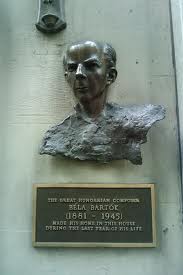
20th Century, Concerto, News Flash, Works
Béla Bartók (1881-1945) completed the sketches for his viola concerto shortly before his death in New York from leukemia in 1945. He had been commissioned to write the concerto by William Primrose, the great Scottish violist. Bartók wrote to Primrose shortly before his death that the concerto had been fully sketched out and only required a few weeks to be orchestrated, but he died before this work could be completed. At the request of the Bartók family, it fell to Tibor Serly, Bartók’s close friend and colleague, to write the orchestrations and finalize the concerto for publication. It took four years for Serly to finish this task, owing largely to the fragmentary nature of Bartók’s sketches, which were written on 13 unordered pieces of paper. The concerto was premiered by Primrose in 1949. While a number of subsequent revisions have been done (including one by Peter Bartók, the composer’s son), the original Serly version has remained a beloved staple of the viola literature ever since.
The concerto has three movements, played without a break. The opening Moderato begins with a lyrical four-bar theme in the solo viola, accompanied by ‘cello and bass. The theme is taken up by the winds in turn, and appears several times in the course of the movement. A contrasting triplet-based theme appears twice, accompanied by syncopations in the orchestra.
A short declamatory section (lento parlando) and a bassoon solo serve as a bridge to the short second movement. Titled adagio religioso, it is a quiet sustained slow movement, with a short agitated middle section featuring woodwind trills. A sudden solo viola accelerando brings us to a lively allegretto, punctuated by horns and timpani.
The rollicking last movement is based on a Rumanian Scottish-influenced melody appearing in contrast. Brilliant viola bring this work to a satisfying conclusion.
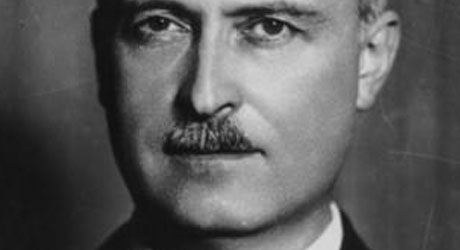
20th Century, Concerto, Works
This concerto was dedicated to Marcel Moyse.
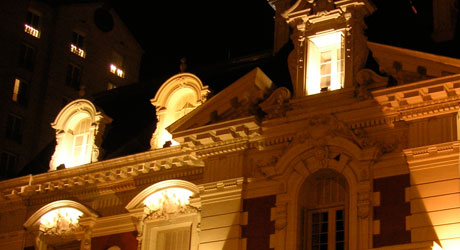
20th Century, Concerto, Works
Astor Piazzolla (1921-1992) was one of Argentina’s most gifted and prolific composers. He started out as a self-taught composer and accomplished player on the bandoneon, an Argentine variant of the concertina/accordion. After formal composition study in Paris he returned to Argentina and revived tango in a modern “nuevo tango” form.
He wrote the four movements of the Cuatro Estaciones Porteñas (Four Seasons of Buenos Aires) between 1965 and 1970 for his tango instrumental quintet (violin, piano, electric guitar, bass and bandoneon). They were conceived as separate pieces, although Piazzolla occasionally performed them together.
In the 1990s, violinist Gidon Kremer commissioned the Russian composer Leonid Desyatnikov to arrange these four compositions for solo violin and string orchestra. Otoño Porteño is the third of these. It is characterized by brilliant passages for the solo violin, strong pulsing rhythms/syncopation, and wistful slow interludes for solo ‘cello and solo violin.
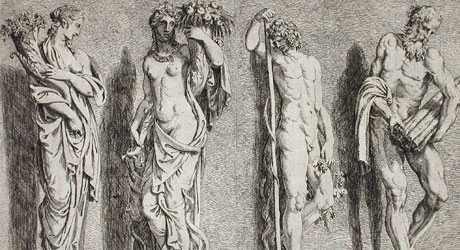
Baroque, Concerto, Works
Vivaldi composed “Le Quattro Staggioni” (the Four Seasons) in 1725. The “Seasons” consist of four programmatic concerti for solo violin and orchestra, of which L’Autunno (Autumn) is the third.
Vivaldi wrote descriptive Sonnets for each of the concerti, with indications of how they should be performed.
L’Autunno opens with peasants celebrating the harvest with song and dance. They start drinking wine, become progressively more tipsy, and finally fall asleep. In the hushed second movement, the pleasant temperature causes everyone to abandon singing and dancing, and invites many to enjoy the sweetness of sleep. The last movement describes a hunt, complete with mounted hunters, hunting horns, guns, hounds, and their quarry.
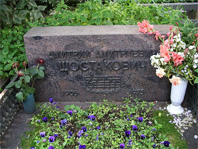
20th Century, Concerto, Works
This happy, exuberant piece was composed by Shostakovich in 1957 for his son Maxim’s 19th birthday. It was premiered that year by the Moscow State Philharmonic, with Maxim as the piano soloist after his graduation from the Moscow Conservatory.
The work is in three movements. The woodwinds start the sprightly allegro, quickly joined by the piano in the opening four-note theme, with bursts of hammering percussive passages.An introspective lyrical second theme follows, with the piano accompanied by soft strings. A development section and return to the initial theme bring the movement to a close.
The middle movement is by turns wistful, poignant and lyrical, with singing piano themes that evoke late 19th-century romanticism. The piano opens the final sparkling allegro with octave-based flourishes and scales. Following that, a rollicking second theme (in 7/8 time) is heralded by the winds, in turn picked up by the piano and the strings.
On a pedagogical note, Shostakovich included many scale and arpeggio passages ‑ based on piano exercises by Louis Hanon ‑ to make sure that Maxim would learn them! Those passages are in turn echoed by the strings. A recap of the main theme, strong brass-led chords, and a timpani flourish bring this sparkling concerto to its close.
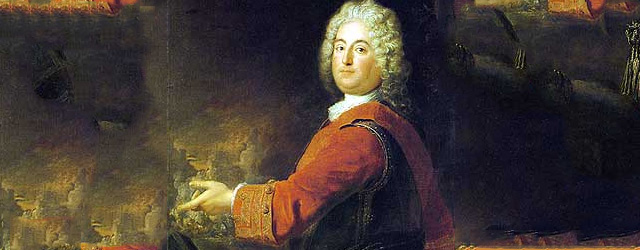
Baroque, Concerto, Works
Bach’s six Brandenburg Concertos were dedicated to the Margrave of Brandenburg, and bear a dedication date of 1721.
The instrumentation of the sixth concerto is most unusual, consisting only of violas, violas da gamba, ‘cellos, basses and continuo. This “lower string” instrumentation give the work a harmonious and mellow sonority. We are performing this work in “concerto grosso” style, with viola and ‘cello soloists.
The work is in three movements. The opening Allegro features the main theme in close canon, with the 2 viola parts entering right on the heels of each other, and the other instruments following suit, The following Adagio is a trio sonata in fugal form; the 2 viola soloists alternatively present the theme in various keys. The solo ‘cello and bass pick up the fugal theme towards the end of the movement. The last movement is a joyous ritornello. The string orchestra is juxtaposed against florid passages by the two solo violas and solo ‘cello, with the main theme returning four times.
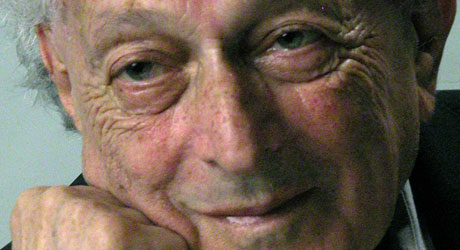
20th Century, Concerto, Works
My CONCERTO in the old style FOR THREE SOLO VIOLINS AND STRING ORCHESTRA was commissioned in 1994 by Marc Mostovoy for a group he founded, directed and conducted called the Concerto Soloists of Philadelphia (now called the Chamber Orchestra of Philadelphia, resident at the Kimmel Center). I completed the work in 1994 and dedicated it to Marc Mostovoy and his Concerto Soloists, who successfully premiered the work on January 8, 1995, at the Church of the Holy Trinity in Rittenhouse Square, Philadelphia. The solo violinists were Elizabeth Kaderabek, Richard Amoroso and Jennifer Haas. Tonight’s performance, with solo violinists Muneyoshi Takahashi, Kinga Augustyn, and Tzu-En Lee, will be the second performance of the work and a New York premiere.
For several years before the Philadelphia commission, I had been contemplating writing a concerto “in the old style.” Such a work by a contemporary composer is not as unusual as one might think. Many other composers have written works in the style of a previous era. This list would include such composers as Schoenberg, Prokofiev, Hindemith, Brahms, Stravinksy, Resphighi, and even Haydn. Since I had done a great deal of research into the music of the 18th and 19th centuries, I thought I would like to write a concerto grosso in the baroque style. I was delighted when the opportunity presented itself with the 1994 Mostovoy commission.
When I had completed my three-movement concerto, it turned out to be wholly original, albeit with obvious shades of Bach, Vivaldi and Townsend. The Bach and Vivaldi influences are clearly evident in the first and second movements, while Townsend predominates in the third (final) movement.
Structurally, the FIRST MOVEMENT is in a large three-part form with the first section being a statement of themes, the second section being a contrasting section (a kind of development section), and with the third section being a recapitulation of the themes of the first section.
The SECOND MOVEMENT is a Siciliana, which was a type of slow dance favored by Baroque composers for the slow movements of their concertos. This movement is in a kind of two-part form, where each part is repeated, yielding four sections (ABAB-Coda). The first section is the Siciliana theme itself, followed by a repeat of that theme by the piano. The second section is a contrasting section, played largely by the three solo violins. The third section is a repeat of the Siciliana theme in the first section. This is followed by a fourth section which is a repeat of the second section (which repeat also serves as a coda to the movement).
The THIRD MOVEMENT is in the classical rondo form, very much favored by Baroque and Classical composers. A (theme), B (contrasting section), A (theme), C (contrasting section), A (theme and coda). A large part of the C section has two of the three solo violins playing fast notes, while the first violin plays a more sustained lyrical melody. This style was favored by Bach and Vivaldi in the last movement of their concertos. Technically, in some places, the C section has the three solo violins playing in three different keys and three different rhythms all at the same time. This is strictly Townsend, and was not influenced by Bach or Vivaldi.
Notes by Douglas Townsend, NYC
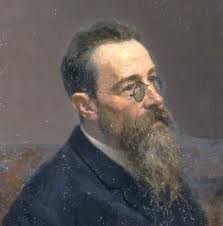
Concerto, Romantic, Works
Rimsky-Korsakov is best known for large-scale works – operas and symphonies, as well as chamber works, which are staples of Russian romantic music. Less-well known, however, is that he initially embarked on a career with the Russian navy.
After retiring from the service, he was appointed Inspector of Music Bands of the Navy in 1873 and held that post until 1884. During that time he familiarized himself extensively with wind and brass instruments, and composed a number of concert pieces to elevate the musical level of navy band performances. One of the pieces he wrote was the concerto for trombone and military band, a 3-movement work first performed in 1878.
The concerto shows off both the lyrical and technical aspects of the trombone. It opens right away with a heroic solo theme; moves to an introspective and lyrical middle movement; and ends in a rousing last movement heralded by trumpets and snare drum.
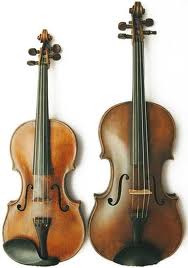
Classical, Concerto, Works
This piece represents one of the highest achievements of Mozart’s art. It is at once a symphony and a concerto, and showcases both the violin and the viola (the latter being an instrument particularly loved and played by Mozart himself).
The orchestra sets the mood at the outset in a magnificent opening section – majestic in style, with elegant contrasting sections, and featuring one of the most dramatic crescendos in all of the musical literature. The soloists make their subtle entrance entwined with the end of the opening orchestral section. Mozart gives the soloists their own distinctive themes, with orchestral accompaniment interspersed with vigorous symphonic sections; a lengthy double cadenza leads to a rousing ending.
The lovely second movement is set in the contrasting key of C minor, which Mozart uses to convey themes of great poignance and emotion (albeit in his restrained classical style), with its own cadenza for the soloists. The third movement is a spritely rondo, with lively themes taken up by the orchestra and soloists in turn. After a final rising flourish by the soloists, the piece ends joyously
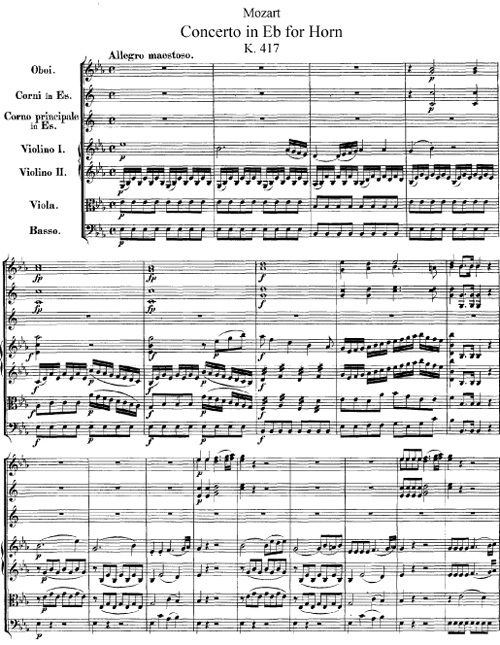
Classical, Concerto, Works
Between 1783 and 1791 Mozart wrote four horn concertos and a horn quintet. All of these works were dedicated to one person – Joseph Leutgeb. Leutgeb was an acclaimed performer and one of Mozart’s closest friends in Vienna. Indeed, their friendship was so close that it enabled Mozart to take the liberty of inscribing on the title page of the concerto: “Mozart takes pity on Leutgeb, ass, ox, and simpleton, at Vienna, March 27, 1783.”
Typically childish Mozartean cynicism aside, all the four concertos long ago formed an important part of the horn repertoire and even today continue to challenge even the most celebrated masters of the instrument. The first movement of the concerto is a sonata allegro based on two contrasting themes. The first theme has a march-like character and solid tonal plan – in contrast to the second “female” theme with its singing quality. A new episode (B minor) introduced in the development section deserves special attention.
The second movement is a peaceful Andante with beautiful cantilenas in the solo part. These arresting melodies must have been a perfect match to Leutgeb’s famous singing tone on the horn. The last movement is a rondo (ABACABA) in the rhythm of a cheerful dance. An important element of this movement is the frequent use of trills, which – when the concerto was written – created tremendous difficulty for the performer.










